by Paul Batters
It’s always a tough gig trying to compile any favourites list and when it comes to film, I personally find it particularly difficult to do. But after seeing this blogathon hosted by The Classic Film and TV Café, the challenge was too tempting to let slide. The following five films are cinematic classics that have deeply moved me and ones which I have developed a profound connection to. They are also films which I have watched time and time again, only to discover something new during every viewing. Most importantly, they are timeless for the powerful performances of the key actors and actresses, the thematic concerns and the cinematic quality of their production.
There’s no right or wrong answer to this. And yes, yes and yes, there are other films which could be added, dropped or given an honourable mention. But these films are what stand out for me.
So without further ado…
The Asphalt Jungle (1950)
Without a doubt one of the finest films in the pantheon of film noir, The Asphalt Jungle is also the quintessential heist film. Directed by John Huston, it also contains one of the greatest lines in film noir and one which sums up the core value of noir – ‘Crime is but a left-handed form of human endeavour’.
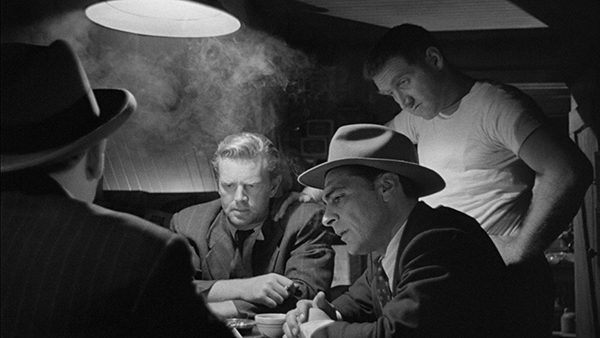
Starring Sterling Hayden as a small time hood named Dix, he’s a tough, no-nonsense man who has principles as well as a dream to get back to his childhood home. The whole cast is outstanding and each character embodies the foibles, dreams and weaknesses of humanity, seeking a way out yet finding themselves moving deeper into the darkness. Dix becomes part of a gang put together by Doc (Sam Jaffe), a gentlemanly crook whose scheme of a big jewellery robbery is funded by Emmerich (Louis Calhern) a corrupt lawyer, who has his own plans. Their meticulous plans will become undone by greed as much as the hand of fate in a taut and superbly crafted story.
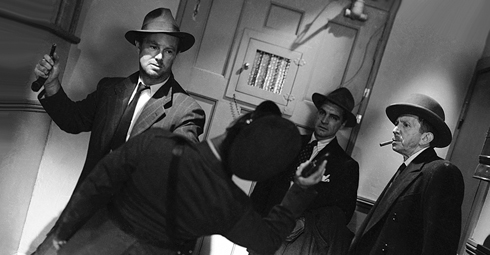
There’s no slackness and no loose ends, and Miklos Rozsa’s score underpins the desperation of men seeking to get out from under. We’re left feeling as desperate as the men on the screen, hoping against hope that they will make it – to wherever it is they are going. Grim but exciting and riveting from start to finish, The Asphalt Jungle is mandatory viewing not only for those who love film noir but for any fan of classic film.
Incidentally, I’ll be writing a review of The Asphalt Jungle for the 2019 Noirama Blogathon hosted by Maddy Loves Her Classic Films
The Bad And The Beautiful (1952)
Vincente Minelli’s bittersweet poem to Hollywood pulls no punches, revealing the nature of the industry and the people who work within it. The story focuses on director Fred Amiel (Barry Sullivan), movie star Georgia Lorrison (Lana Turner), and screenwriter James Lee Bartlow (Dick Powell) and their personal and working relationship with producer Jonathon Shields (Kirk Douglas). Minelli made it a point thatthe characters’ humanity was integral to the success of the film and that they were not immune to weaknesses, which were counterpoints to their strengths.
The harsh reality behind the magic of film is brought forward through three different stories told in retrospect. Yet all three are intertwined and ultimately centred on the ruthless yet brilliant and emotional Shields, who has given them their career breaks yet also betrayed them, professionally and personally. Douglas plays Shields with incredible sensitivity and depth, delivering the personal pain, passions and difficulties that film-makers face. The other key players are also superb and for my money it is one of Lana Turner’s most memorable performances as the alcoholic actress, who falls in love with but is eventually spurned by Shields.
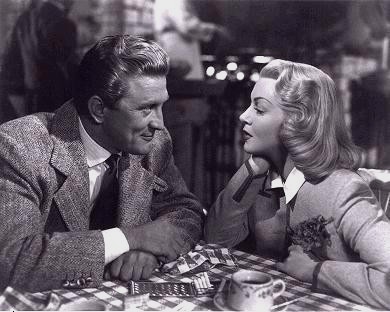
There’s plenty to pull apart as the characters and scenarios are drawn from Hollywood history. Georgia Lorrison is based on the daughter of legendary John Barrymore, Diana. The European director von Elstein is certainly a nod to the European directors who came to Hollywood such as von Sternberg and von Stroheim. Watching Shields and Amiel work on ‘Doom Of The Cat Men’ is without a doubt an homage to Val Lewton’s unit at RKO and the making of The Cat People (1942). According to a number of reports, Shields was based on David Selznick, whose life and career certainly shows parallels with the obsessed producer.
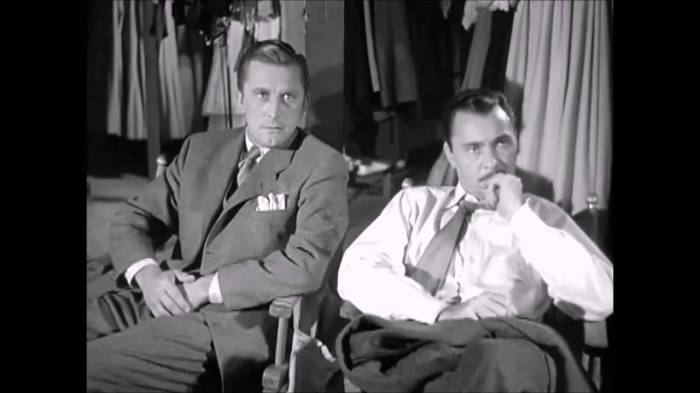
The Bad And The Beautifulis not nostalgic or sentimental; there is a deeper undertone of harsh realism that counters any such possibilities, without it being an expose. But it’s impossible not to feel for the characters and despite their ruthlessness, selfishness and complexities, like us, they love film and are ultimately moved by its magic. As a result, I’ve always been deeply moved by The Bad And The Beautiful.
On The Waterfront (1954)
If ever there was an actor on the screen whose brilliance was matched by apathy to the industry, it was and still is Marlon Brando. There are countless actors and film-makers who turn to On The Waterfront as their inspiration for becoming involved in film, and it is impossible not to argue with them.
Elia Kazan’s grim crime drama tells of the corruption deeply entrenched in the unions which control the New Jersey docks but more importantly it highlights the impact that it has one the longshoremen and their families. The harsh, cold setting and stark story is a contrast to the colour extravaganzas of the musicals that were popular during the period. It was a gutsy picture for Kazan to make, aided by Schulberg’s superb script. There are some deeper criticisms that emerge, focused on Kazan’s testimony for HUAC which have been discussed at length elsewhere.
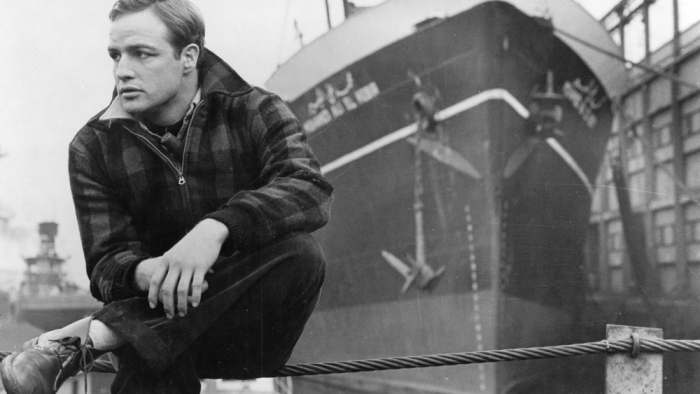
The cast is strong and Eva Marie Saint’s debut as Edie stands tall with Karl Malden as tough priest Father Barry (who for my money deserved the Best Supporting Actor), Rod Steiger as Charley and Lee J. Cobb as the crooked union boss, Johnny Friendly.
But the fact remains that the film is Brando’s and the incredible performance as ex-boxer Terry Malloy is one of the greatest in film history. Brando is natural, realistic and adds subtle touches which add a beautiful element to his performance. Terry is torn between the rules that he has known all his life, the cynical harshness that has shaped his reality and the tenderness and desire for something more that is drawn from deep within by his love for the delicate yet strong and determined Edie.
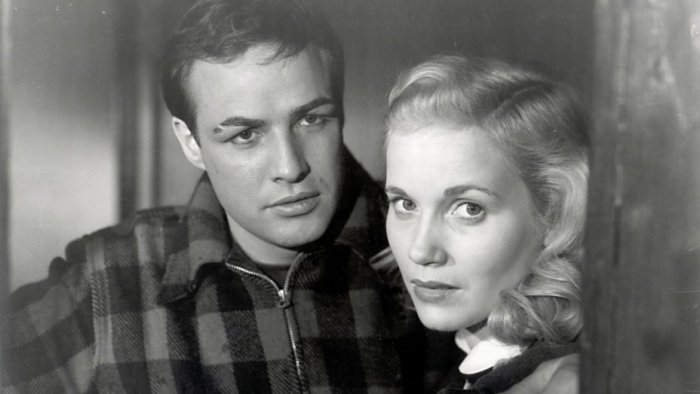
The most famous scene in the film has been paraphrased, satirised and almost exhausted to the point of cliché. But the cab scene between Terry and his brother Charley is a powerful scene and deservedly one of the most celebrated and lauded scenes in film history. Brando would declare that he initially hated the scene and bemoaned Steiger’s ‘always wanting to cry’ in dramatic scenes. Yet years on, Brando would come to terms with the universality of the scene and be at peace with it. Malloy is channelling what nearly everyone feels at some point in their life – that there was a moment in time, a chance, where they could have become more than what they are and reached heights that met their dreams and potential, which never eventuated for whatever reason.
On The Waterfront is a powerful and provocative film and the ending which sees Terry stand up for a chance to make a difference and that he even though he’s ‘lost the battle’, he can ‘still win the war’ is inspirational. For me, it deserves to be recognised as one of the finest films of the 1950s.
Paths Of Glory (1957)
Paths Of Glory is a masterclass of cinematography by Stanley Kubrick and one of the key reasons why I feel it is an exceptional cinematic experience. The cold realism of the horrors and cruelty of war are experienced by the audience, through the camera’s presence with the soldiers during battle. It is a stark contrast to the conventional war film with dramatic music being absent and the use of silence to heighten tension, with the aim of realism being well-established.
Kirk Douglas plays Colonel Dax in the French army during World War One. An intelligent man who is leading his men into battle, he is also well aware of the futility of war as well as the stupidity of the orders from high-ranking officers. Douglas offers a strong, tempered performance, balancing the character’s frustrations with the unprincipled, contemptuous and disgraceful Broulard (Adolphe Menjou).
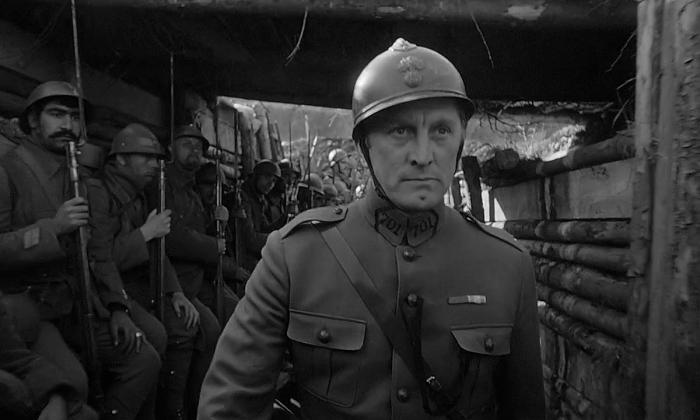
Thematically, the film examines the brutality and cruelty of humans during war and the contempt that the military has for the men who are doing the fighting and dying on the battlefields.
Dax leads a futile attack on Anthill, a position held by the Germans which Dax knows is doomed to fail. Dax tries to lead his men as best he can, despite the madness of the orders given but the shelling of his own men by French artillery sees disaster result. Brigadier-General Mireau (George MacReady) decides to court-martial 100 of his men for the failure, in an attempt to deflect blame from himself.
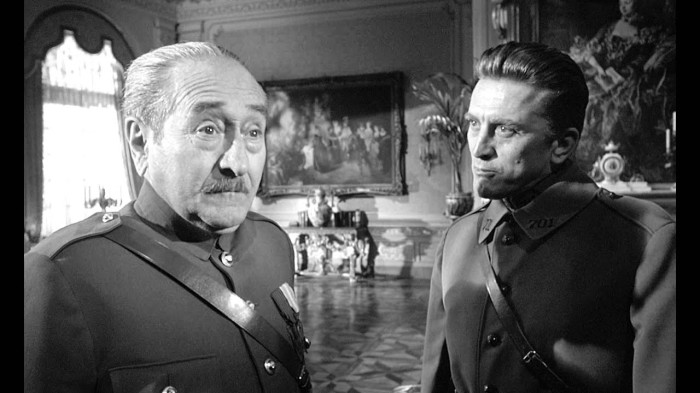
Dax, a former lawyer, defends three of his men in a trial which is at best a travesty of justice and procedure. Despite his honourable attempts, Dax knows it is a pointless defence, mirroring the futility of the battlefields.
An anti-war film it is but it is also more than that – it is a strong indictment against injustice, corruption and the cruelty of humans at their worst. It is as much an anti-militaryfilm as well. It was a film with a rawness that would be banned in some countries due to its’ anti-military tone.
Paths Of Glory is one of Douglas’ best performances in a film that is testimony to the genius of Stanley Kubrick.
Vertigo (1958)
I recently wrote about Vertigo( see link ) and cannot speak highly enough of what I believe is perhaps Hitchcock’s most beautiful film. It leads the audience through the mental anguish of former cop turned private investigator Scottie (Jimmy Stewart) and a mash-up of his obsession founded in dream and nightmare. Kim Novak was never more ethereal and captivating as Madeline and Bernard Herrmann’s score is, as Martin Scorsese declares, a spiralling and circular movement that lifts and drop the audience along with Scottie’s journey through obsession.
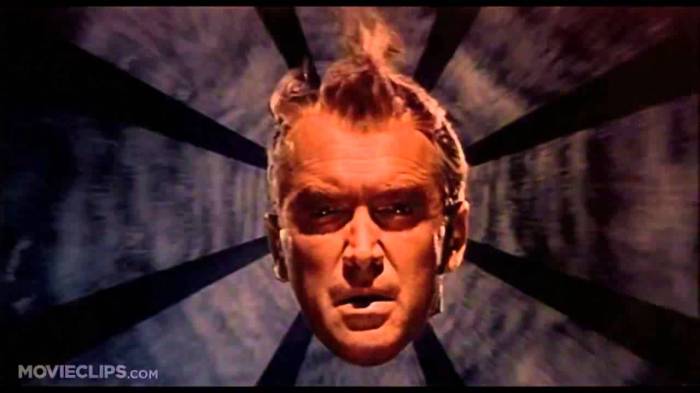
The plot won’t be discussed here but needless to say it touches the audience with its’ themes in ways that few films ever could. It becomes personal and deeply intrusive into our own psyches.
It’s no mistake that Vertigo has consistently made the top ten lists of many film critics, film magazines and institutions, such as the AFI and Empire.The BFI’s magazine, Sight And Sound, more recently listed it as the greatest film made, leap-frogging Citizen Kane. Hitchcock constructs his film with all the cinematic tools at his disposal with incredible depth and consideration. Whilst certainly existing in the stylistic and tonal registers of film noir, it is also a deep psychological thriller.
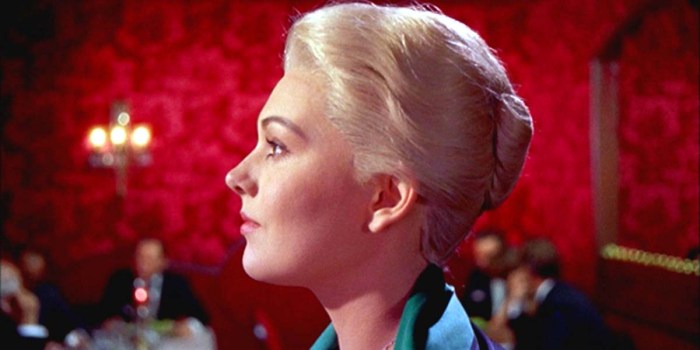
Jimmy Stewart as Scottie is the everyman caught up in and duped by circumstances that he initially cannot see but there could be endless conversation over his choices and the nature of his obsession with Madeline. Madeline is also a victim of her own trick because she falls in love with Scottie as well, something she did not expect to happen.
For me, Vertigo is one of the greatest films of all time and deserves to be in the canon of the best films of the 1950s. For more on my thoughts of Vertigo, you can visit the link here: Alfred Hitchcock’s ‘Vertigo’ (1958): The Art Of Obsession.
Film should be deeply personal, even though we cast a critical eye on the films we watch and absorb. At the end of the day, Hollywood is trying to make a buck but that’s also because film-makers want their films to be seen for an emotional response and connection with the audience. It’s why classic film endure and why they always have something to say.
This article has been submitted for the 5 Favourite Films Of The 1950s Blogathon which was kindly hosted by Rick at Classic Film And TV Cafe. A huge thank you for hosting and allowing me to take part! Please click on the above link for some other great articles!
Paul Batters teaches secondary school History in the Illawarra region and also lectures at the University Of Wollongong. In a previous life, he was involved in community radio and independent publications. Looking to a career in writing, Paul also has a passion for film history.





Some GREAT choices here!!! Been some time since I have seen the Asphalt Jungle – need to rewatch that one! As a radio guy myself, I need to ask – where did you work?
LikeLiked by 1 person
Thanks so much! It was quite some time ago in community radio – 2VOX FM in the Illawarra just south of Sydney, NSW, Australia. Started and ran a hip hop show for 5 years back in 1990.
LikeLike
Haunting films all that linger in the memory and demand our attention.
LikeLiked by 1 person
Amazing list! Some of my very favourites. Glad to see The Bad and The Beautiful on the list. That movie doesn’t get nearly enough praise. And The Asphalt Jungle! Heavens, one of the greatest.
LikeLiked by 1 person
As you know I love them both. It’s a superb performance from Kirk Douglas and I think one of Lana’s best.
LikeLiked by 1 person
I agree!
LikeLike
I recently saw three of these films, for the first time, Vertigo, On the Waterfront and The Asphalt Jungle. I had put off watching On the Waterfront, because I’m always nervous a film won’t live up to its’ hype. It not only lived up to the praise but exceeded it and succeeded in turning me into a Brando fan. As for the other movie, I’ve always found The Bad and the Beautiful fascinating, much like a train wreck I just can’t turn away from.
LikeLiked by 1 person
VERTIGO is on my list, too. Simply put, it’s one of the greatest movies ever made and I gain something new from it each time I watch it. PATHS OF GLORY is Kubrick at his best, a restrained but very intense film. And ON THE WATERFRONT features my favorite Brando performances, plus superb acting from Lee J. Cobb and Eva Marie Saint. A fine list!
LikeLiked by 1 person
Thanks so much! I agree that Paths Of Glory is restrained and that’s what makes it work and leave such a devastating impact on the audience. As for Brando – what brilliance! Changed the landscape of acting for always
LikeLike
I saw On the Waterfront on the big screen not long ago, a local theater was honoring Leonard Bernstein’s centenary. The experience was almost overwhelming – the story is powerful enough, but the caliber of acting seemed to make each scene jump off the screen. Extremely emotional.
The Bad and the Beautiful is also on my list and Vertigo nearly was. I could not choose between Vertigo, Rear Window and Strangers on a Train, so picked the film I hadn’t yet blogged about (Rear Window).
Excellent selections all, Paul, every one a classic among classics.
LikeLiked by 1 person
Thank you so much! I truly envy you seeing it on the big screen – I missed an opportunity to see On The Waterfront during a classic film run but I hope I get the chance in the future.
The other Hitchcock films you mention are fantastic films and it feels almost sinful to try and edge any out – but I had to go with Vertigo for the reasons I mentioned.
Thanks so much for your positive comments!
LikeLike
Nice choices!! some of these are ones I wanted to include in my own! Its so hard just to choose 5!!
LikeLiked by 1 person
I couldn’t agree that choosing 5 is so tough!!! So many other films to choose from – Sunset Boulevard, 12 Angry Men, All About Eve, Singin’ In The Rain, Witness For The Prosecution etc. Maybe we need to do a few more lists and add them in!
LikeLiked by 1 person
haha! true!
LikeLiked by 1 person
Such excellent choices Paul! And you explain perfectly why these films are so great. The only one I haven’t seen is The Bad and the Beautiful but I’ll definitely put it on my to-watch list.
LikeLiked by 1 person
Thank you so much Virginie! It’s certainly a difficult choice to list five but the choices I made are, I believe, magnificent films. I think you will adore The Bad And The Beautiful and I’m very interested in what you think about it. Btw – it has a beautiful musical score as well.
LikeLiked by 1 person
So glad you included “The Asphalt Jungle”. I feel it’s not only one of the best films of the 1950s, but one of the best films ever.
Yours is an impressive list. Nicely done!
LikeLiked by 1 person
I feel the same way. The Asphalt Jungle is an outstanding film and one which I also feel is one of the best films in the pantheon of classic film. I’m actually reviewing it in July for Noirama – excited and intimidated by the prospect!
LikeLiked by 1 person
I’m looking forward to reading your review in July. I always learn something from you.
LikeLiked by 1 person
Thank you so much! Truly honoured you feel that way about my writing. 🙂
LikeLike
Excellent list, Paul. The only one I haven’t seen is The Asphalt Jungle. But it’s one I really should make a priority as I know it’ll be great.
LikeLiked by 1 person
Thank you so much! The Asphalt Jungle is superb and definitely one to check out – brilliant in every way.
LikeLiked by 1 person